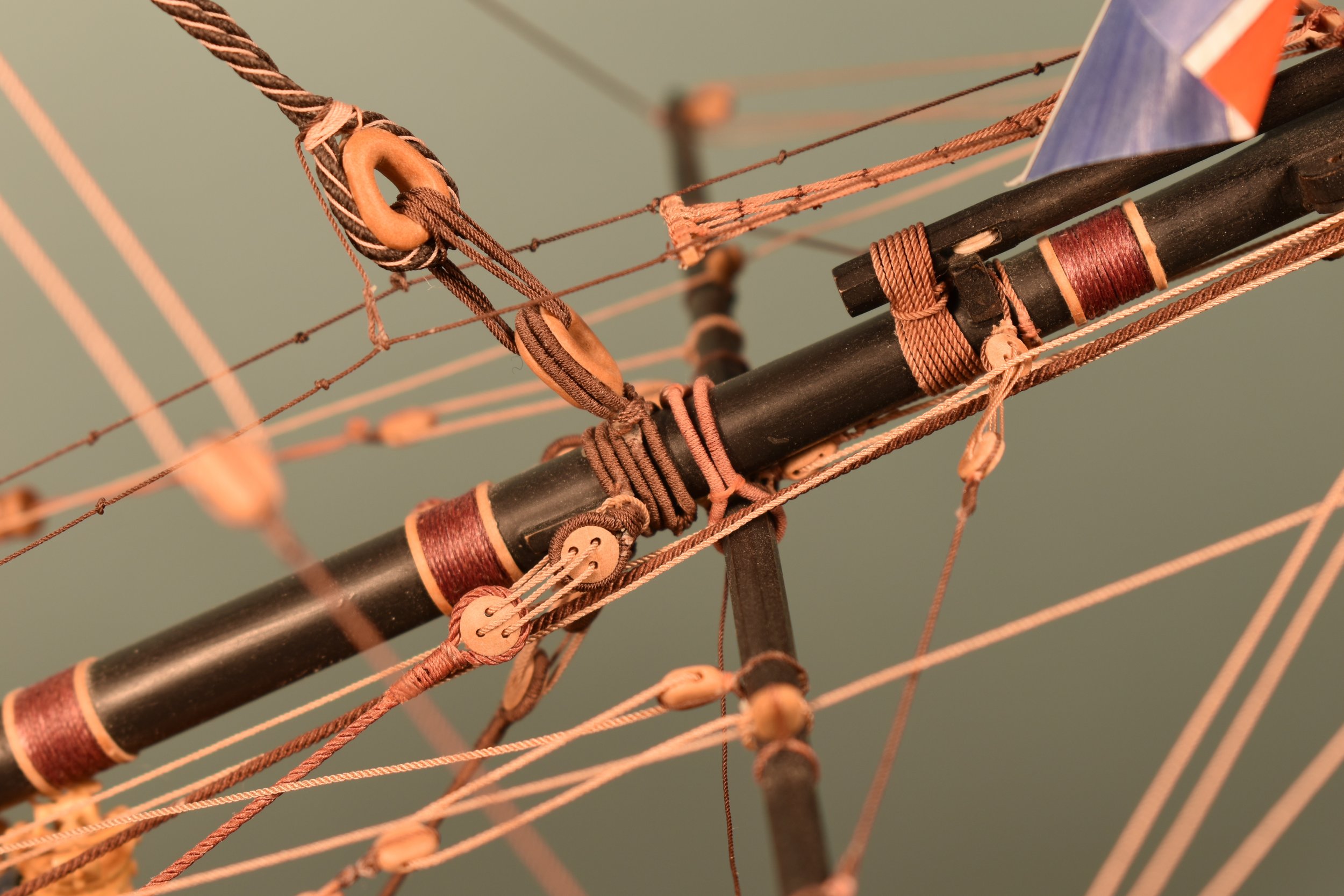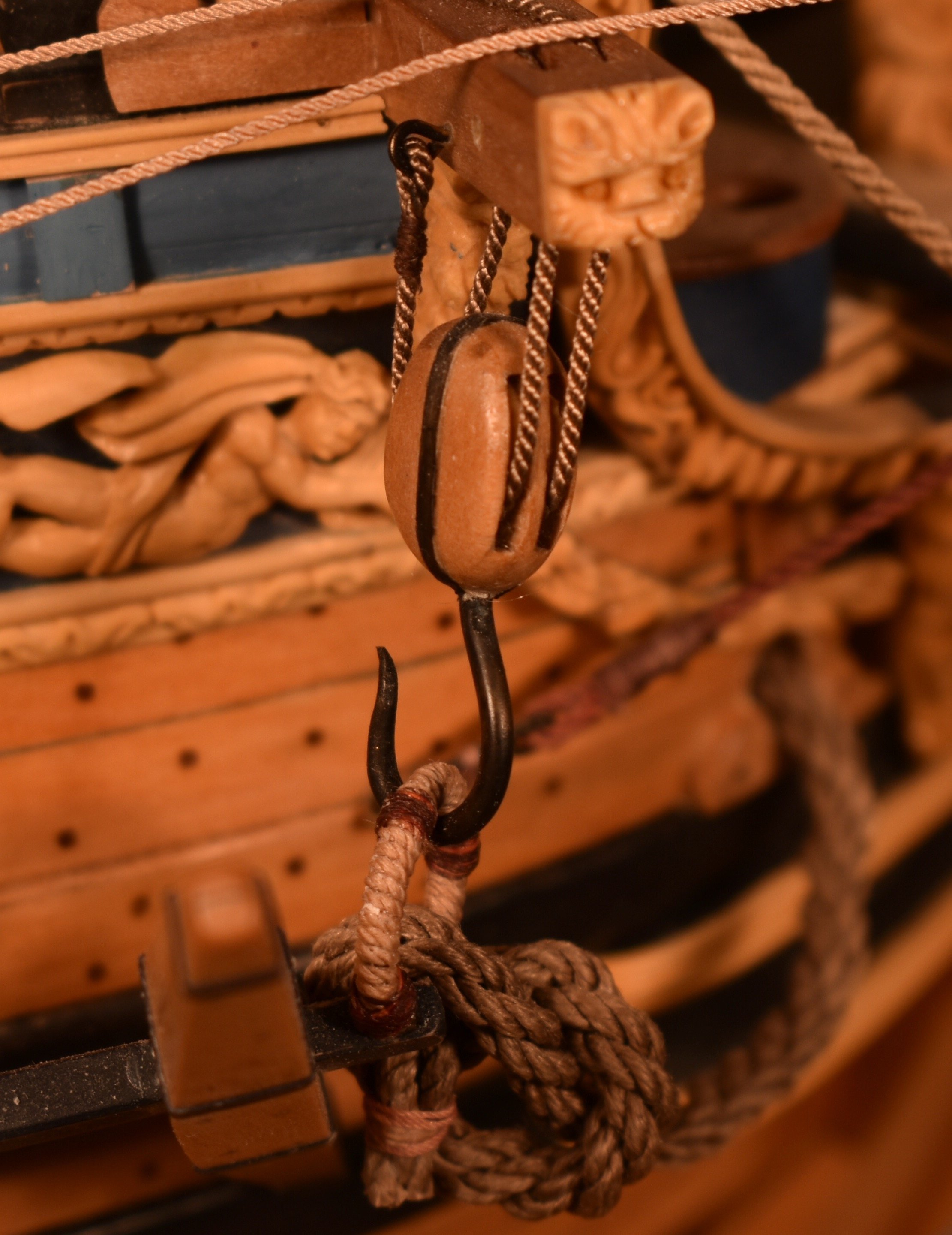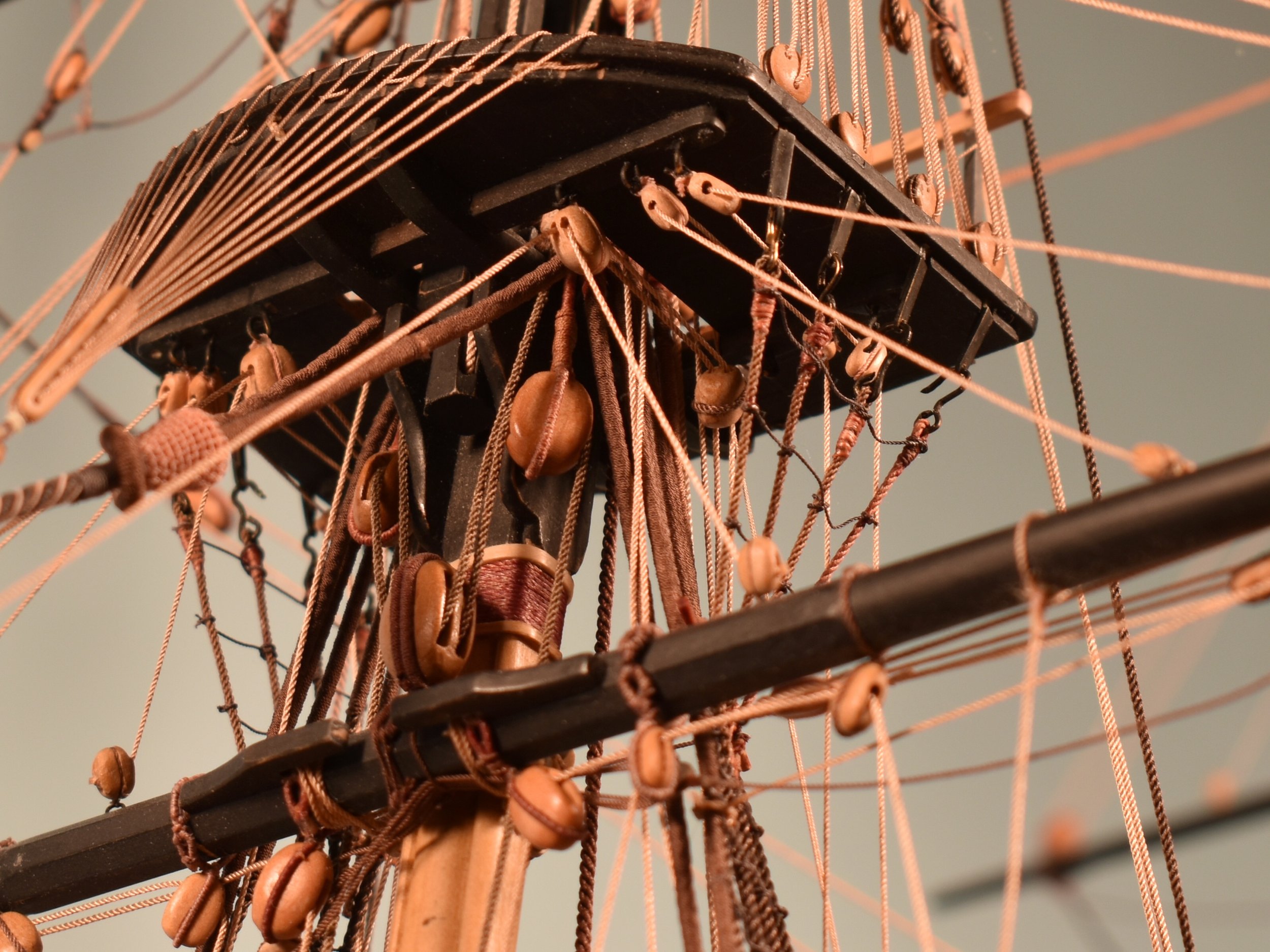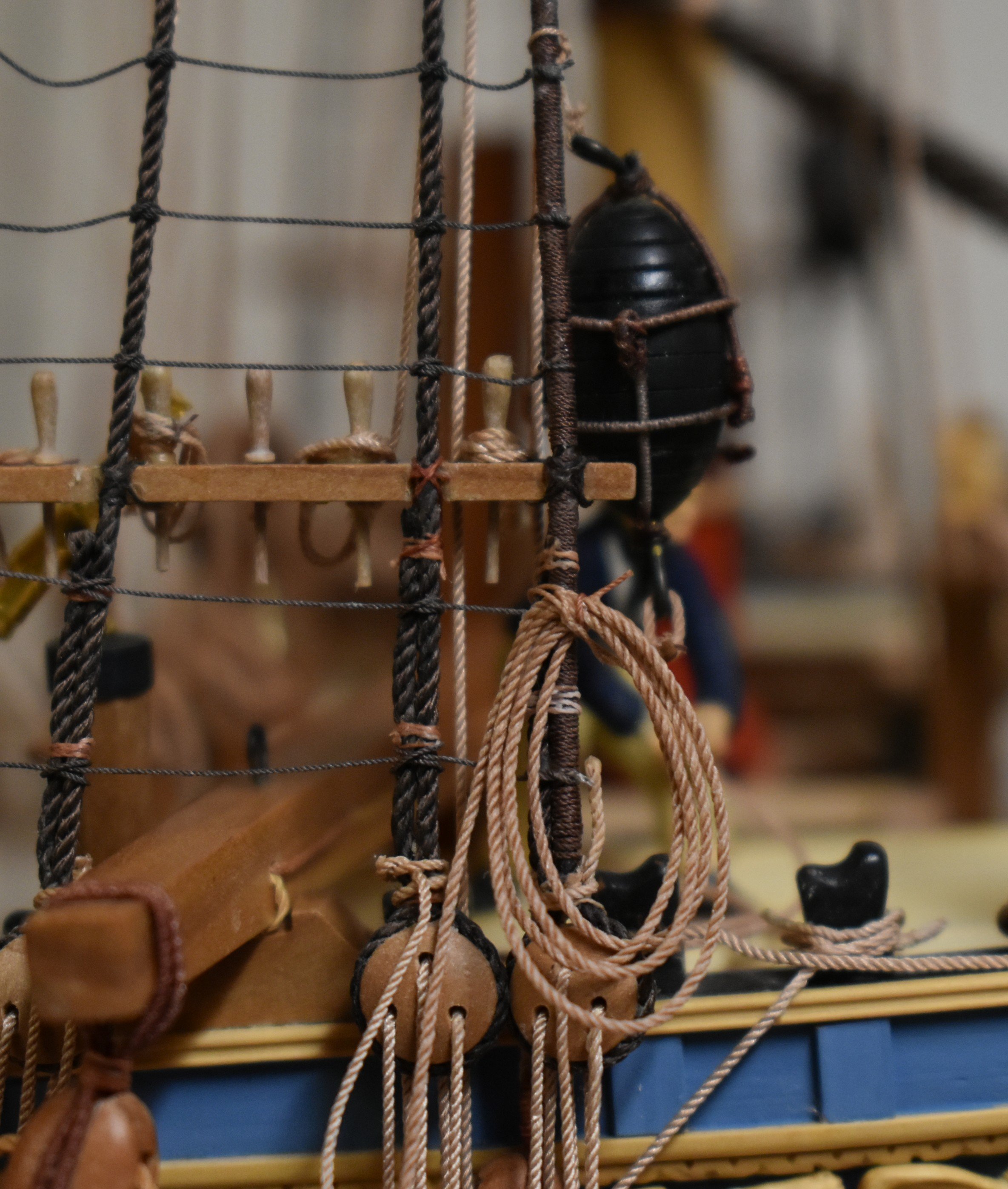Lloyd McCaffery's Ultimate Ship Model: HMY Royal Caroline, 1749
scratch built ship model 1:48 scale, ¼” =1’ — length of hull 26”
apple wood, lilac and hawthorn, boxwood, 38" long x 34" high x 13" wide
SOLD
After a half century of model-building and carving in miniature, Lloyd McCaffery decided to invest a considerable amount of time building a significant ship model that would incorporate everything he has learned in his career as this generation's most influential miniature ship modeler. This HMY Royal Caroline model is built to the absolute highest standards of research and technique. It forms a major part of his legacy, and is meant to be a benchmark and standard reference going forward, for the field of miniature ship modeling.
The model is 1:48 scale or 1/4"= 1,' and was built piece by piece using the same techniques as were used in the building of the full-sized ship. For example, even the keel is built up from separate pieces of wood. The starboard side shows the frames and some planking, while the port side is cut open to show the interior construction and fitting. Lloyd carefully chose the materials he used for both their appearance and their ability to stand up to the tests of time.
Each and every part of the model was handmade by Lloyd -with the exception of the glass beads, which he painted, and used for the parrels. The basic structure is made of apple wood, with lilac and hawthorn for fittings. The extensive carvings are made of natural finish boxwood, while the rigging is fashioned of silk. The model has the appearance of a 'Georgian' style period model (1740-1830), with emphasis on the decorations and structure. The model measures 38" long x 34" high x 13" wide, and is mounted on an apple wood plinth.
We asked Lloyd why he chose the Royal Caroline as the subject for a model to enhance his legacy:
"His Majesty’s Royal Yacht (HMY) Royal Caroline fulfills the three requirements I have established for the ideal ship model subject. Ideally, the ship is good looking. Next, we must have accurate information, such as a lines plan, photos for more recent subjects, and paintings for older ships. Finally, she must have historical significance. This may conflict with the above requirement of good looks. James Cook’s Endeavour with which he sailed the globe on a voyage of discovery in 1764, is a vitally important ship in history, but not very attractive.
HMY Royal Caroline was one of the most beautiful and lavishly decorated vessels of the great age of sail. Built in 1749 for King George II, to replace the Royal Charlotte, we have a great deal of accurate information with which to make a model. She also has historical significance, both by being one of the Royal Yachts, and due to the influence her hull form had on future designs of small vessels in the Royal Navy.
My intent in starting this project was not simply to manipulate materials to make an object, but to create a unique work of art, based on sound research. These factors inspired me to undertake this multi-year major project late in my career, to make a significant statement of what a ship model can be, and to establish a benchmark in this field. This is the ultimate ship model. I needed to understand the cultural milieu in which the ship was created. This ship was a product of its time; therefore, I needed to understand something of a lost culture. It means re-creating, or at least trying to understand the nautical zeitgeist of 18th century England.
When I create a ship model, I look at the whole ensemble as an artistic composition. The lines chosen, colors of materials, and even the shape and colors of the base all must work together in visual harmony, so the whole assemblage is pleasing to the eye, and satisfying to the soul." ~ Lloyd McCaffery
Starboard side view of the HMY Royal Caroline model, this view shows framing, planking and decorative carvings.
Port side view of the HMY Royal Caroline model, Lloyd has left this side open to show the construction of the ship, interior living spaces and furnishings in the model.



















